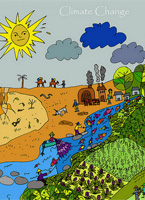Bioenergy production from degraded land provides an opportunity to secure a new renewable energy source to meet the rapid growth of energy demand in Indonesia while turning degraded land into productive landscape. However, bioenergy production would not be feasible without landowner participation. This study investigates factors affecting landowners preferences for bioenergy production by analyzing 150 landowners with fire experience in Buntoi village in Central Kalimantan using Firths logistic regression model. Results indicated that 76% of landowners preferred well-known species that have a readily available market such as sengon (Albizia chinensis (Osb.) Merr.) and rubber tree (Hevea brasiliensis Müll.Arg.) for restoration on degraded land. Only 8% of preferred nyamplung (Calophyllum inophyllum L.) for bioenergy production; these particular landowners revealed a capacity to handle the uncertainty of the bioenergy market because they had additional jobs and income, had migrated from Java where nyamplung is prevalent, and preferred agricultural extension to improve their technical capacity. These results contribute to identifying key conditions for a bottom-up approach to bioenergy production from degraded land in Indonesia: a stable bioenergy market for landowners, application of familiar bioenergy species, and agricultural extension support for capacity building.
Authors:
Artati, Y.; Wanggi Jaung; Juniwaty, K.S.; Andini, S.; Lee, S.M.; Segah, H.; Baral, H.
Year:
2019

